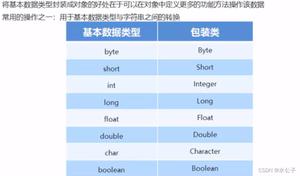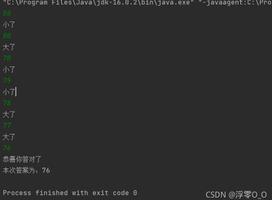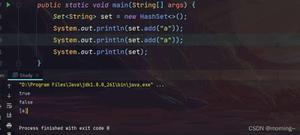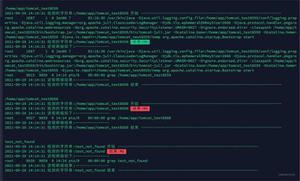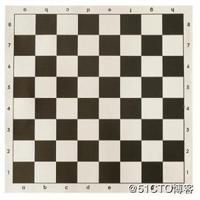Java 基础(集合一)

一、集合框架的概述
1.集合、数组都是对多个数据进行存储操作的结构,简称Java容器。 说明:此时的存储,主要指的是内存层面的存储,不涉及到持久化的存储(.txt,.jpg,.avi,数据库中)
2.1 数组在存储多个数据方面的特点:
> 一旦初始化以后,其长度就确定了。
> 数组一旦定义好,其元素的类型也就确定了。我们也就只能操作指定类型的数据了。
比如:String[] arr;int[] arr1;Object[] arr2;
2.2 数组在存储多个数据方面的缺点:
> 一旦初始化以后,其长度就不可修改。
> 数组中提供的方法非常有限,对于添加、删除、插入数据等操作,非常不便,同时效率不高。
> 获取数组中实际元素的个数的需求,数组没有现成的属性或方法可用
> 数组存储数据的特点:有序、可重复。对于无序、不可重复的需求,不能满足。
二、集合框架
|----Collection接口:单列集合,用来存储一个一个的对象 |----List接口:存储有序的、可重复的数据。 -->“动态”数组
|----ArrayList:作为List接口的主要实现类:线程不安全的,效率高;底层使用Object[] elementData存储
|----LinkedList:对于频繁的插入,删除操作,使用此类效率比ArrayList高;底层使用双向链表存储
|----Vector:作为List接口的古老实现类;线程安全的,效率低;底层使用Object[]存储
|----Set接口:存储无序的、不可重复的数据 -->高中讲的“集合”
|----HashSet:作为Set接口的主要实现类;线程不安全的;可以存储null值
|----LinkedHashSet:作为HashSet的子类;遍历其内部数据时,可以按照添加的顺序对于频繁的遍历操作,LinkedHashset效率高于HashSet。
|----TreeSet:可以按照添加对象的指定属性,进行排序。
|----Map接口:双列集合,用来存储一对(key - value)一对的数据 -->高中函数:y = f(x)
|----HashMap、LinkedHashMap、TreeMap、Hashtable、Properties
CollectionTest.java
package com.klvchen.java2;import org.junit.Test;
import java.util.ArrayList;
import java.util.Collection;
import java.util.Date;
public class CollectionTest {
@Test
public void test1(){
Collection col1 = new ArrayList();
// add(Object e): 将元素e添加到集合 col1中
col1.add("AA");
col1.add("BB");
col1.add(123);
col1.add(new Date());
//size(): 获取添加的元素的个数
System.out.println(col1.size());
//addAll();
Collection coll1 = new ArrayList();
coll1.add(456);
coll1.add("CC");
col1.addAll(coll1);
System.out.println(col1.size());
System.out.println(col1);
//clear(): 清空集合元素
col1.clear();
//isEmpty():判断当前集合是否为空
System.out.println(col1.isEmpty());
}
}
CollectionTest1.java
package com.klvchen.java2;import org.junit.Test;
import java.util.ArrayList;
import java.util.Arrays;
import java.util.Collection;
import java.util.List;
public class CollectionTest1 {
@Test
public void test1(){
Collection col1 = new ArrayList();
col1.add(123);
col1.add(456);
col1.add(new String("Tom"));
col1.add(false);
col1.add(new Person("Jerry", 20));
// Person p = new Person("jerry", 20);
// col1.add(p);
//1.contains(Object obj):判断当前集合中是否包含obj
//我们会在判断时调用obj对象所在类的equals()。
boolean contains = col1.contains(123);
System.out.println(contains); //true
System.out.println(col1.contains(new String("Tom"))); //true
// System.out.println(col1.contains(p)); //true
System.out.println(col1.contains(new Person("Jerry",20)));
//2.containsAll(Collection coll1):判断形参coll1中的所有元素释放都存在于当前集合中
Collection coll1 = Arrays.asList(123, 456);
System.out.println(col1.containsAll(coll1));
}
@Test
public void test2(){
//3.remove(Object obj): 从当前集合中移除obj元素
Collection col1 = new ArrayList();
col1.add(123);
col1.add(456);
col1.add(new Person("Jerry", 20));
col1.add(new String("Tom"));
col1.add(false);
col1.remove(1234);
System.out.println(col1);
col1.remove(new Person("Jerry", 20));
System.out.println(col1);
}
@Test
public void test3(){
Collection col1 = new ArrayList();
col1.add(123);
col1.add(456);
col1.add(new Person("Jerry", 20));
col1.add(new String("Tom"));
col1.add(false);
//5.retainAll(Collection coll1): 交集:获取当前集合和coll1集合的交集,并返回当前集合
// Collection coll1 = Arrays.asList(123, 456, 789);
// col1.retainAll(coll1);
// System.out.println(col1);
//6.equals(Object obj):要想返回true,需要当前集合和形参集合的元素都相同,顺序也要一样。
Collection coll1 = new ArrayList();
coll1.add(123);
coll1.add(456);
coll1.add(new Person("Jerry", 20));
coll1.add(new String("Tom"));
coll1.add(false);
System.out.println(col1.equals(coll1));
}
@Test
public void test4(){
Collection col1 = new ArrayList();
col1.add(123);
col1.add(456);
col1.add(new Person("Jerry", 20));
col1.add(new String("Tom"));
col1.add(false);
//7.hashCode():
System.out.println(col1.hashCode());
//8.集合 --> 数组 toArray()
Object[] arr = col1.toArray();
for (int i = 0; i < arr.length; i++){
System.out.println(arr[i]);
}
//数组 --> 集合: 调用Arrays类的静态方法 asList()
List<String> list = Arrays.asList(new String[]{"AA", "BB", "CC"});
System.out.println(list);
List<int[]> arr1 = Arrays.asList(new int[]{123, 456});
System.out.println(arr1);
System.out.println(arr1.size());
List arr2 = Arrays.asList(123, 456);
System.out.println(arr2);
List arr3 = Arrays.asList(new Integer[]{123, 456});
System.out.println(arr3.size());
}
}
以上是 Java 基础(集合一) 的全部内容, 来源链接: utcz.com/z/391098.html


